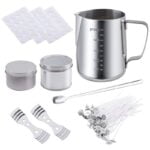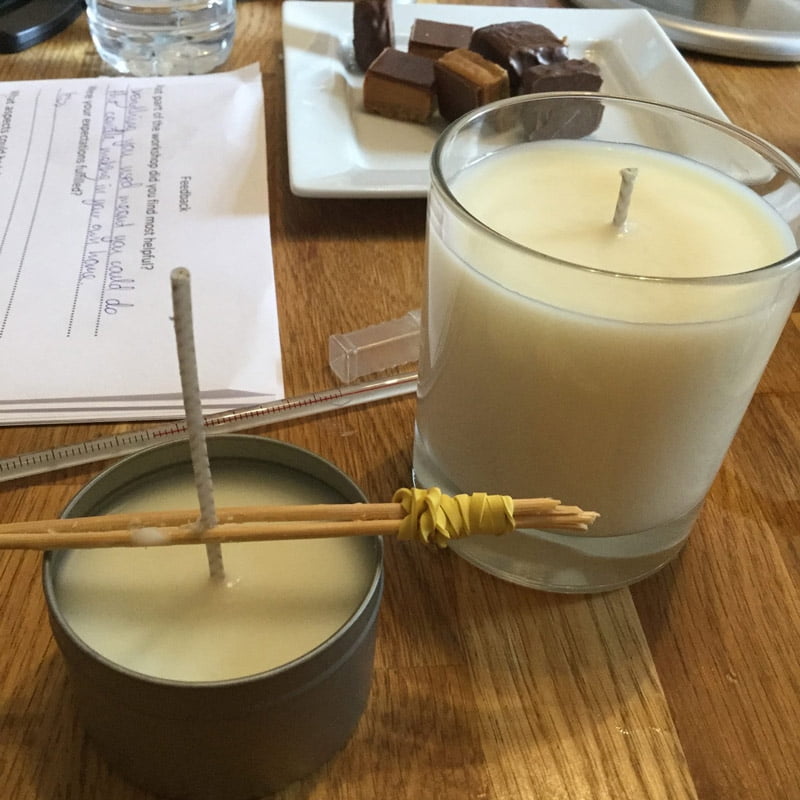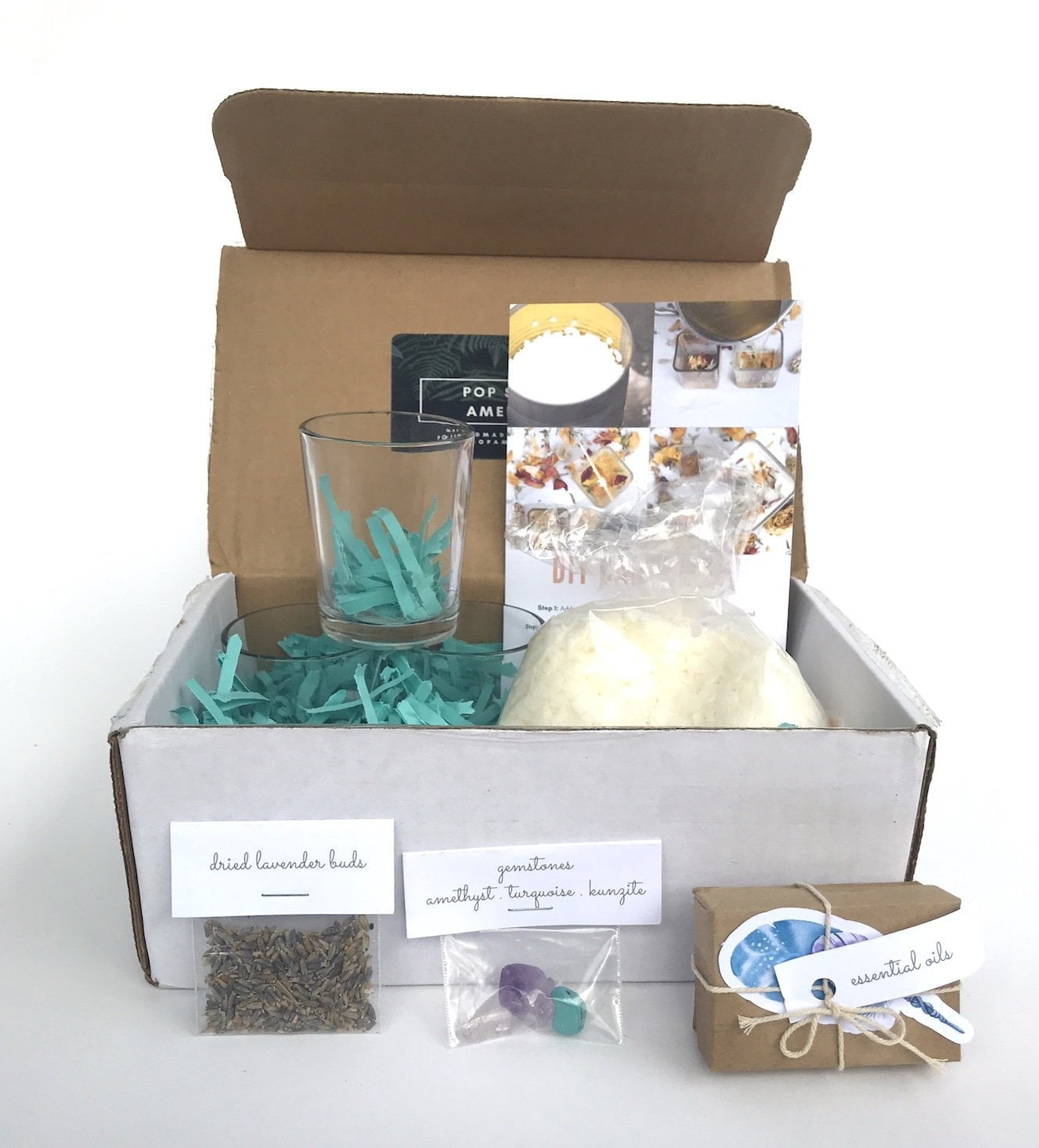What kind of thermometer for candle making is crucial for achieving the perfect candles every time. Whether you’re a beginner or an experienced candle maker, having the right thermometer can make all the difference in the quality of your final product.
When it comes to candle making, precision and accuracy are key. The temperature at which you mix and pour your wax can greatly impact the texture, appearance, and even the scent throw of your candles. This is where a reliable thermometer becomes an essential tool in your candle making arsenal.
In this article, we will explore the importance of using a thermometer in candle making, discuss the different types of thermometers available (digital vs. analog), and provide guidance on choosing the right thermometer for various candle making techniques. Additionally, we will offer tips on finding the ideal temperature range for candle making and highlight key features to look for in a quality thermometer.
If you want to take your candle making skills to the next level, read on to discover how selecting the perfect thermometer can lead to candle making success.
Types of Thermometers for Candle Making
When it comes to making candles, having the right thermometer is essential for achieving the perfect results. Two of the most common types of thermometers used in candle making are digital and analog. Each type has its own set of advantages and disadvantages, so it’s important to understand the differences between them before making a decision.
Digital thermometers for candle making are often preferred by beginners due to their ease of use. These modern devices provide accurate readings quickly and are typically equipped with features such as automatic shut-off and temperature memory. Some even come with alarms to alert you when the wax has reached the desired temperature. However, digital thermometers can be more expensive than their analog counterparts and may require batteries or regular calibration.
On the other hand, analog thermometers have been used in candle making for many years and are favored by some experienced candle makers. These traditional thermometers consist of a glass tube filled with mercury or alcohol, allowing for accurate temperature readings. While analog thermometers may take longer to display the temperature compared to digital ones, they are generally more affordable and do not rely on batteries or electronic components that can malfunction over time.
Whichever type of thermometer you choose, consider your level of experience, budget, and personal preference. Both digital and analog thermometers can effectively measure the temperature of wax for various candle making techniques, so it ultimately comes down to what works best for you.
Choosing the Right Thermometer for Different Candle Making Techniques
When it comes to candle making, choosing the right thermometer for different techniques is essential in ensuring the success of your projects. Different types of candles require different temperature monitoring to achieve optimal results. In this section, we will explore the specific requirements for choosing the right thermometer for container candles versus pillar candles.
Container Candles
For container candles, a digital thermometer with a probe would be an ideal choice. This type of thermometer allows you to easily monitor the temperature of the wax inside the container without having to constantly open and close the lid, which can lead to temperature fluctuations. Look for a digital thermometer with a long probe that can reach into the center of the wax for accurate readings.
Pillar Candles
In contrast, pillar candles require a different approach when it comes to temperature monitoring. An analog candy thermometer or infrared thermometer would be more suitable for monitoring the temperature of melted wax when making pillar candles. These types of thermometers provide quick and accurate readings without the need for prolonged contact with the hot wax, which is essential when working with molds and shaping pillar candles.
By choosing the right thermometer based on the specific candle making technique you are using, you can ensure that your candles turn out just as you envision them, whether they are poured into containers or molded into pillars. With the proper thermometer in hand, you can monitor and maintain the ideal temperature throughout the entire candle making process, resulting in high-quality, professional-looking candles every time.
The Ideal Temperature Range for Candle Making
When it comes to candle making, achieving the ideal temperature is crucial for creating high-quality candles. The ideal temperature range for candle making varies depending on the type of wax being used. Whether you’re working with paraffin wax, soy wax, or beeswax, finding the sweet spot in terms of temperature is essential for ensuring that your candles turn out just right.
Understanding the Ideal Temperature Range
Different types of waxes have different melting points and optimal pouring temperatures. For example, paraffin wax typically melts and pours best at around 160-180°F (71-82°C), while soy wax has a lower melting point of about 120-140°F (49-60°C).
Beeswax, on the other hand, requires a higher pouring temperature of approximately 145-160°F (63-71°C). It’s important to research the specific temperature requirements for the type of wax you are using to ensure the best results.
Finding the Sweet Spot
To find the perfect temperature for your candle making process, it’s important to use a reliable thermometer that provides accurate readings. With so many options available on the market, it can be overwhelming to choose the right thermometer for candle making. Digital thermometers offer quick and precise readings, while analog thermometers are often preferred for their durability and ease of use. Consider your personal preferences and choose a thermometer that meets your specific needs.
Importance of Monitoring Temperature
Monitoring the temperature throughout the candle making process is essential for achieving consistent results. If the wax is too hot when fragrance oils are added, it can cause them to evaporate or degrade, resulting in a weaker scent throw in the finished candle.
On the other hand, if the wax is too cool when poured into containers or molds, it may not adhere properly and could result in sinkholes or other imperfections. By keeping a close eye on the temperature using an appropriate thermometer, you can ensure that every batch of candles turns out just right.
Features to Look for in a Thermometer for Candle Making
When choosing a thermometer for candle making, it is essential to consider the features that will ensure accuracy, durability, and ease of use. These three factors are crucial in producing high-quality candles consistently, regardless of the type of candle being made or the technique being used.
Accuracy is perhaps the most important feature to look for in a thermometer for candle making. The ability to measure temperature with precision is necessary to achieve the correct melting and pouring temperatures for different types of wax. A thermometer with a clear, easy-to-read display and a narrow temperature range can help ensure accurate readings, leading to better results in candle making.
Durability is another key feature to consider when selecting a thermometer for candle making. The process of melting wax and creating candles can be messy and potentially hazardous for delicate instruments. Therefore, it is important to choose a thermometer that is made from durable materials such as stainless steel or heavy-duty plastic and has a protective covering around the display to prevent damage from spills or splatters.
Ease of use is also an important factor when choosing a thermometer for candle making. Look for a thermometer that is designed specifically for candle making, with features such as a clip or attachment mechanism that allows it to be securely fastened to the side of the melting container, leaving your hands free to stir or pour wax. Additionally, opt for a thermometer with an easy-to-grip handle and simple controls for smooth operation during the candle making process.
Recommended Thermometers for Candle Making
When it comes to candle making, having the right thermometer is essential for achieving the perfect results. There are a few different types of thermometers that can be used for candle making, with digital and analog options being the most popular choices. But what kind of thermometer for candle making is the best option? Let’s take a closer look at some recommended thermometers for both beginners and pros in the candle making industry.
For beginners, a basic digital candy thermometer can be an excellent option. These thermometers are easy to use and provide accurate temperature readings, making them ideal for those who are just starting out in the world of candle making. They typically have temperature ranges that are suitable for most types of candles, whether you’re making container candles or pillar candles.
On the other hand, more experienced candle makers may prefer a infrared thermometer gun, which allows for quick and precise temperature readings without having to make direct contact with the wax. This type of thermometer is especially useful for those who are working with larger batches of wax or who need to monitor multiple temperatures at once.
Overall, when choosing a thermometer for candle making, it’s important to consider factors such as accuracy, durability, and ease of use. Selecting a thermometer that meets your specific needs will help ensure that you consistently achieve the best results in your candle making endeavors.
| Recommended Thermometer | Best For |
|---|---|
| Digital candy thermometer | Beginners |
| Infrared thermometer gun | Experienced candle makers |
Tips for Properly Using a Thermometer in Candle Making
When it comes to candle making, using a thermometer is crucial in ensuring the success of your creations. But it’s not just about having a thermometer – it’s also about using it properly to avoid common mistakes that could compromise the quality of your candles. Here are some tips for making the most out of your candle making thermometer.
First and foremost, always make sure to calibrate your thermometer before every use. This ensures that you are getting accurate readings and prevents any potential errors in temperature measurement. To calibrate your thermometer, simply immerse it in ice water and check if it reads 32°F (0°C). If not, you may need to adjust it accordingly.
Another important tip is to handle your thermometer with care. Whether you’re using a digital or analog thermometer, they are both delicate instruments that can easily break if mishandled. Be gentle when inserting them into the wax and make sure not to drop them or subject them to any sudden impact.
Lastly, remember to clean your thermometer after each use. Wax residue can build up on the thermometer, affecting its accuracy over time. Use rubbing alcohol or soap and water to clean the thermometer thoroughly before storing it away for future use. Proper maintenance ensures that your thermometer remains effective and reliable for all your candle making endeavors.
By following these tips for properly using a thermometer in candle making, you can avoid common mistakes and achieve consistent results with your candles. Paying attention to the details of temperature measurement can make a significant difference in the quality of your finished products.
Conclusion
In conclusion, the choice of thermometer for candle making can greatly impact the success of your creations. Whether you opt for a digital or analog thermometer, it is important to consider the specific requirements of your candle making technique. For container candles, a digital thermometer with a probe is highly recommended for precise temperature readings within the melted wax. On the other hand, pillar candles may benefit from the simplicity and reliability of an analog thermometer.
Finding the ideal temperature range for candle making is crucial, as it can affect the quality and appearance of your final product. The right thermometer will help you achieve this sweet spot consistently, leading to better results and overall satisfaction with your candles. Look for features such as accuracy, durability, and ease of use when selecting a thermometer for candle making to ensure that it meets your needs and lasts through many crafting sessions.
In addition, having proper guidance on using a thermometer in candle making can help you avoid common mistakes that may compromise your efforts. By following best practices and utilizing the right tools, such as a reliable thermometer, you can elevate your candle making skills and create beautiful products with confidence. With careful consideration and research, you can select the perfect thermometer for candle making success.
Frequently Asked Questions
What Thermometer Measures Wax Temperature?
The most common type of thermometer used to measure wax temperature for candle making is a candy thermometer. This type of thermometer is designed to withstand high temperatures, making it suitable for measuring the temperature of melted wax.
What Temperature Is Best for Candle Making?
The best temperature for candle making depends on the type of wax being used. For example, paraffin wax typically requires a temperature range of 160-180°F, while soy wax generally needs to be heated to around 120-180°F. It’s important to follow the specific temperature recommendations provided by the wax manufacturer for best results.
Can You Make Soy Candles Without a Thermometer?
While using a thermometer is generally recommended for making soy candles, it is possible to make them without one. However, without a thermometer, it becomes more challenging to ensure that the wax reaches the correct temperature for optimal fragrance throw and burn performance.
In lieu of a thermometer, some candle makers use visual cues such as waiting for the wax to fully melt and become clear before adding fragrance or pouring into containers.

Welcome to my candle making blog! In this blog, I will be sharing my tips and tricks for making candles. I will also be sharing some of my favorite recipes.





